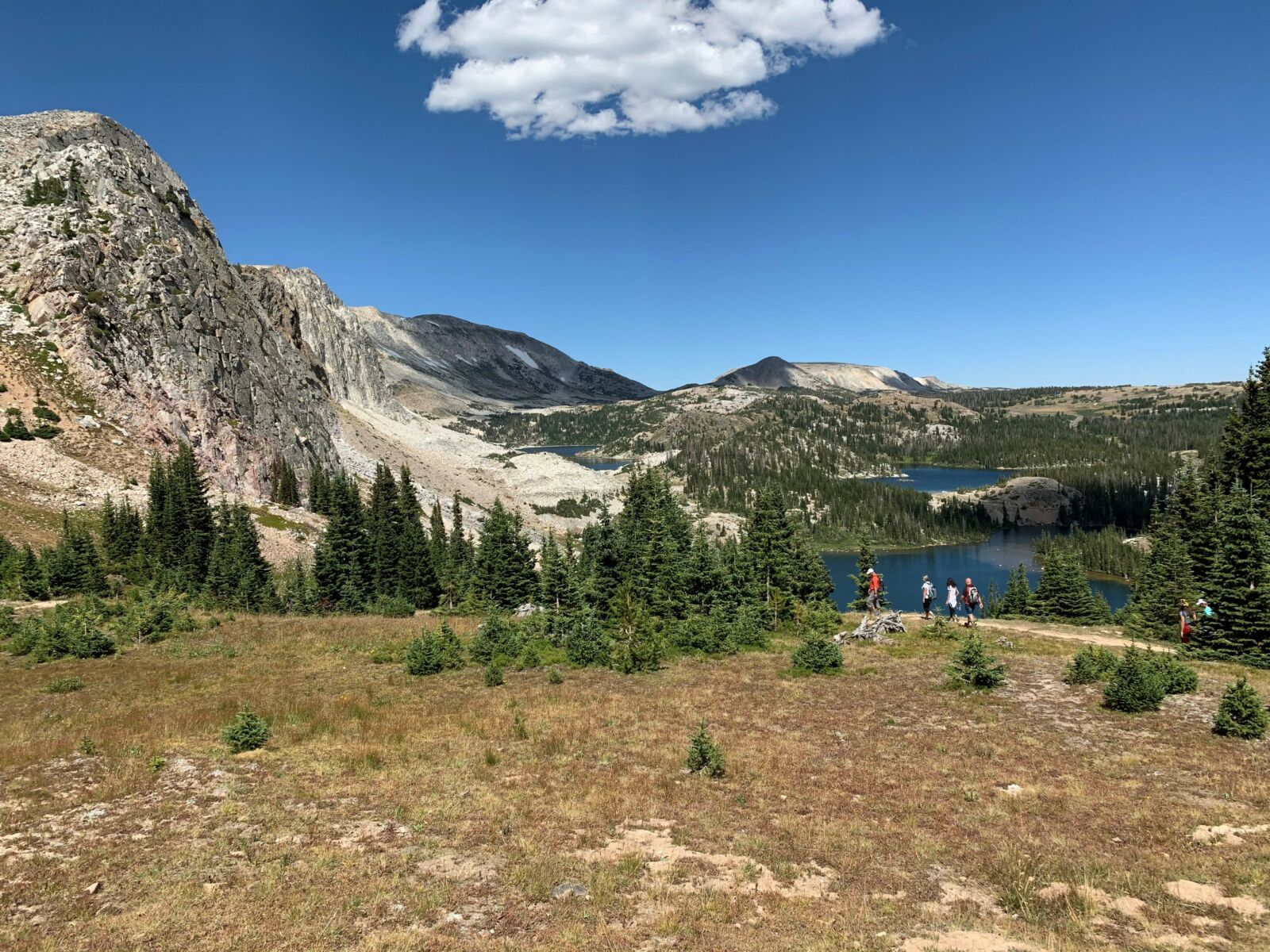You’re ready to get outside and enjoy the beautiful National Forests of Colorado but you don't have a lot of experience. Perhaps you've heard some stories of people having challenging adventures and you'd like to have a fun, enjoyable adventure. We’re here to help!
Check out the items on this page to help make your National Forest visit more safe, inclusive, considerate, and learn some best practices to #RecreateResponsibly in Colorado.

Plan Ahead
Check out how you can Care for Colorado before you head out to visit a National Forest: https://www.colorado.com/artic...
Weather
- Check the weather forecast. Know that weather can change abruptly in Colorado, particularly during the summer monsoon season and at higher elevations.
- Be aware that as you climb up in elevation, the temperature goes down.
- Be prepared to be waterproof and warm.
Recreation location
Check out Recreation.gov or the U.S. Forest Service websites to make your Plan A and Plan B. Be aware that many campgrounds and some hiking trails require reservations. Some areas may be closed if there are active fires in the area, or for other reasons such as post-fire rehabilitation or flood potential.
Parking Space
- Try to arrive early. Busy trailheads may fill up by 9:00 AM.
- If you are hiking with friends or family, think about carpooling to reduce the number of cars.
- Have a Plan B if the lot is full. Parking on the roadside impairs emergency services and hot car pipes touching dry grass can start a wildfire.
- 14ers.com has updated parking lot conditions.
- Some locations have a shuttle to the trailhead - no parking issues!
Elevation impacts our bodies
- The sun is stronger in the thinner air so carry extra sunscreen. Take a hat when you take a hike.
- You may be susceptible to dehydration or dizziness so drink more water than usual.
- Elevation can bring on nausea and emergency urgent bathroom calls. Carry toilet paper, a trowel to dig 6” hole for human waste, and baggies to carry out used toilet paper. Don’t bury toilet paper.
- Exhaustion means slower hiking speeds. Take this into account with trip timing.
- Realize there won’t be services at high elevation. This includes no cell service!
- The higher you climb the less water there is so fill up plenty reusable bottles at home, at least 3-4 liters.

Check out some of these websites and resources to find important information before you go:
- COTrex, Colorado’s Trail Explorer, is a project of the Colorado Department of Natural Resources and Colorado Parks and Wildlife: https://trails.colorado.gov/
- Arapaho & Roosevelt National Forests and Pawnee National Grasslands “Know Before You Go” website, with important details about fire restrictions and wildfire impacts on National Forests along the Front Range, as well as other key information: https://www.fs.usda.gov/detail/arp/alerts-notices/?cid=fseprd613831.
- Recreation.gov, where you can find trip destinations and make reservations for fee-based recreation sites and campgrounds on National Forests and other public lands: https://www.recreation.gov/
- Hiking Project, with trail guides, maps, trail reviews, driving directions and more: https://www.hikingproject.com/
You may have heard of “Pack it in, Pack it out.” Here's a list of items you may want to take in and some things you might not have thought about packing out.
Pack It In
Gear
- Several layers including a jacket so that you’re prepared for weather and temperature changes. A warm hat, gloves, and long pants could come in handy
- Raincoat
- Hiking boots for ankle protection and to stay on the trail even if it’s wet
- Sunscreen, sun hat
Bug spray
- There may not be restrooms available so carry toilet paper in sealable bag plus a separate bag to carry out used toilet paper
- Trowel to dig your “cat hole,” a 6” deep hole for your human waste.
- Consider using a bandana pee rag – no toilet paper needed!
- Hiking sticks have helped many a knee on the way back down the mountain.
Food
- All that hiking will make you hungry! Carry snacks with sustenance and protein.
- Maybe a fork to eat those snacks? Pocket knife to make snacks sharable?
- Trash bag to carry leftovers. Probably not going to eat the banana peel, right?
Water
- At lower elevation there may be running creeks but always use a water filter.
- Hot sun can heat up your water. Consider an insulated reusable bottle.
- Avoid taking glass into outdoor locations.
Pets
- Consider a foldable bowl to pour water into at high elevation where water is scarce.
- Pet poop bags and a way to carry used bags on your hike, so you don’t leave your pet’s waste behind.
Pack It Out
- Carry a trash bag as most of our food ends up with something inedible. Orange peels, protein bar wrappers, partially eaten bags of potato chips. Ok, at least the bag is inedible.
- Clean utensils on the way up need a container for the trip down.
- Litter happens even with the best of intensions. Carry a bag to carry it out.

